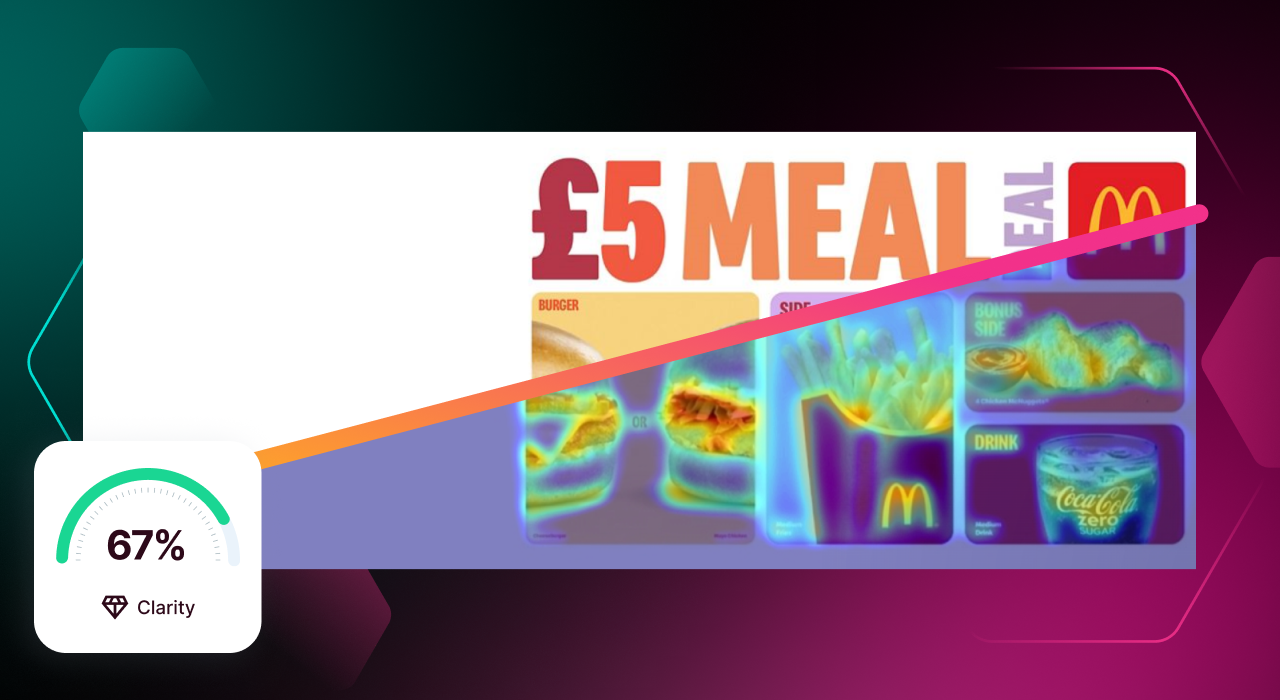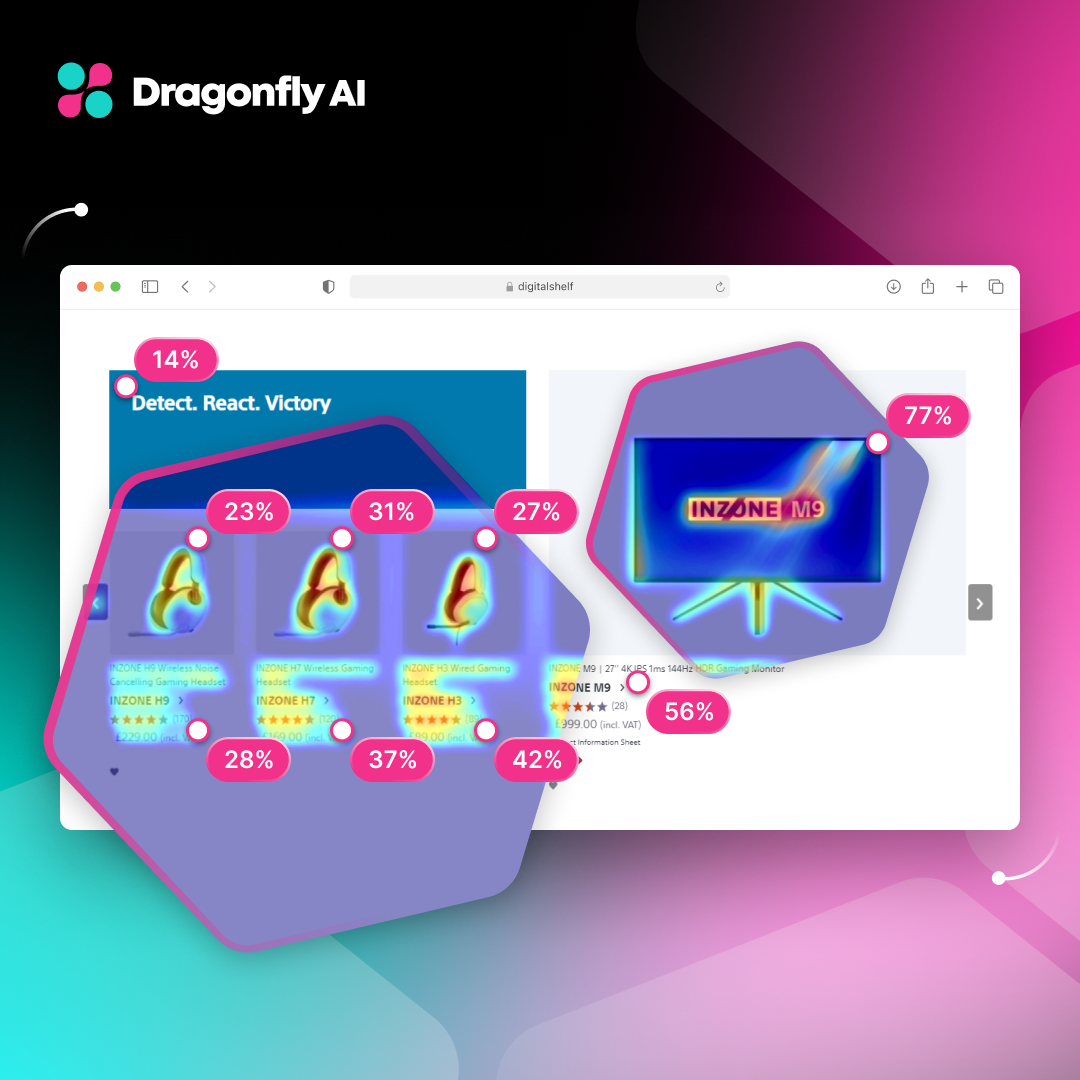Global retail e-commerce sales have skyrocketed to an estimated $5.8 trillion and are predicted to continue to soar with a 39% increase in growth over the coming years.
As online retail sales grow, what is your strategy for optimizing the digital shopping experience to increase conversion rates?
Understanding consumer behavior is crucial for businesses aiming to thrive and improve user experiences. Heat maps are a visual representation of consumer behavior analysis, providing actionable insights into your audience’s digital journey, and can be utilized to make improvements that result in up to 30% more conversions.
Let’s dive into the ways you can optimize the user experience across your digital platforms for organizational success.
What Are Predictive Heatmaps?
With growing competition, organizations are beginning to utilize advanced analytics for a better understanding of user interactions with their online shopping experiences.
Heatmaps can be a powerful tool, visualizing data to show where users are most engaged on a website, revealing their behavior patterns, and areas for improvement.
While standard heatmaps show data based on actual clicks and scrolls, predictive heatmaps go beyond tracking past behavior by using sophisticated algorithms and user data analytics to forecast future engagement patterns.

For more about standard and interactive heatmaps, click here.
Predictive heatmaps go beyond tracking clicks and scrolls but can be used to predict potential actions, offering valuable insights for enhancing customer journey mapping and UX optimization strategies in areas such as:
- user demographics
- browsing history
- interaction trends
The true value of heatmap analytics is their ability to provide a clear and intuitive visualization of user behavior, enabling businesses to make informed design and content decisions that enhance website user experience and drive conversions.
Understanding Consumer Behavior Through Predictive Heatmaps
Consumer behavior analysis is key to tailoring products and services to meet customer needs. Predictive heat maps are vital in this process, visually tracking user engagement on a website and highlighting the visited sections.
These maps provide insights into user intent and engagement patterns, guiding design improvements for better usability and satisfaction. By pinpointing which design elements attract or deter users, businesses can create more effective interfaces to boost overall engagement.
Predictive heat maps also play a crucial role in customer journey mapping, showing how users navigate a site.
Heat maps help:
- identify friction points
- companies streamline shopping pathways
- optimize the customer journey
- improve retention
- increase conversion rates
Optimizing Website User Experience (UX) with Predictive Heatmaps
To create intuitive designs and seamless navigation on websites, optimizing user experience (UX) with predictive heatmaps is essential. By analyzing this data, designers can strategically place important elements like calls to action (CTAs) to capture user attention and encourage desired behaviors.
Predictive heatmaps also aid design optimization by revealing how users interact with images, buttons, and text, aligning content placement with user behavior to boost conversion rates. Understanding where users focus their attention allows businesses to refine designs, resulting in a more engaging and effective online experience.
Key Benefits of Using Predictive Heatmaps for Website Design
Employing predictive heatmaps in website design brings multiple benefits that enhance user experience. By analyzing user interactions through these tools, designers can craft more intuitive and user-friendly websites tailored to visitors' needs.
Predictive heatmaps enable businesses to make data-driven design decisions, prioritizing changes based on actual user behavior instead of assumptions.
By implementing data-driven design changes, retailers can make optimizations that will resonate with users. Moreover, heatmap tools provide ongoing insights into user engagement, allowing for continuous enhancements of website performance.
As businesses continue to monitor user interactions – they can refine layouts, content, and features to ensure the site evolves with user preferences and trends, ultimately leading to higher satisfaction and engagement.
Best Practices for Using Predictive Heatmaps
To make the most of predictive heatmaps, it is beneficial to take a multi-dimensional approach for more accurate decisions.
To do so, you can combine heatmaps with other user behavior analytics like click-through rates, session duration, and conversion metrics for a comprehensive view of user interactions and site performance.
These in-depth insights can empower you to strategically position key elements such as call-to-action buttons (CTAs) and product images in high-attention areas to boost engagement and conversions.

You should continuously track user behavior patterns since they can shift over time. It is also important to remember to regularly update and refine your website's user experience (UX) through continuous testing and iteration.
Discover more best practices for using heatmaps for your website or your mobile apps.
Real-World Examples of Predictive Heatmaps in Action
Let’s look at how leading companies have successfully leveraged heatmaps to enhance user experience and optimize their customer journey.
Taskworld Optimizes Conversion Rates with Heatmaps
By using heatmaps, Taskworld managed to significantly boost their conversion rates through detailed analysis of user behavior during the signup process. The heatmaps highlighted specific click areas, helping the team identify and address friction points.
One minor design flaw can have a major impact on the user experience. For example, a small issue was able to be fixed in just five minutes and as a result increased conversions by 40%. This quick fix underscored the effectiveness of visual data tools like heatmaps in optimizing user experience and enhancing key business metrics efficiently.
Mizzen+Main Reduces Cart Abandonment, Increasing Sales
Mizzen+Main, a men's apparel company, harnessed the power of heatmaps to greatly enhance its website's user experience and boost conversion rates. By examining user interactions, they pinpointed key areas where customers engaged most, such as product pages and call-to-action buttons.
The consumer insights enabled them to optimize page layouts and strategically reposition elements, creating a more seamless shopping experience. As a result, Mizzen+Main saw increased customer engagement with a 39% increase in add-to-cart clicks, and a 4% decrease in cart abandonment and higher conversion rates, ultimately reducing bounce rates to drive sales.
These examples demonstrate measurable success—companies have seen improvements like 20% higher conversion rates, greater customer satisfaction, and more intuitive navigation paths, all driven by data-backed design decisions.
Conclusion
Predictive heatmaps bring substantial benefits for businesses aiming to enhance user experience (UX), optimize website design, and gain valuable consumer behavior insights. By visualizing where users are likely to engage most, these heatmaps allow for strategic placement of key elements like CTAs, ensuring smoother navigation and higher conversion rates.
They also help identify friction points and streamline customer journeys, leading to better site performance and customer satisfaction. In the face of growing digital competition, businesses should adopt predictive heatmap software to stay ahead, improve website performance, and deeply understand their customers' needs.
Implementing predictive heatmap software can help you enhance your website performance and better understand your customers to gain a competitive edge.
You can learn more about the benefits of using heatmaps by reading more here or in our Ultimate Heatmap Guide: Make Smarter Design Decisions. You can discover how Dragonfly AI’s consumer insights can help you optimize your website for attention.
Additional reading:
Using AI-Powered Heatmaps to Optimize Website Design
The Importance of Attention Heatmaps in Digital and Physical Spaces




